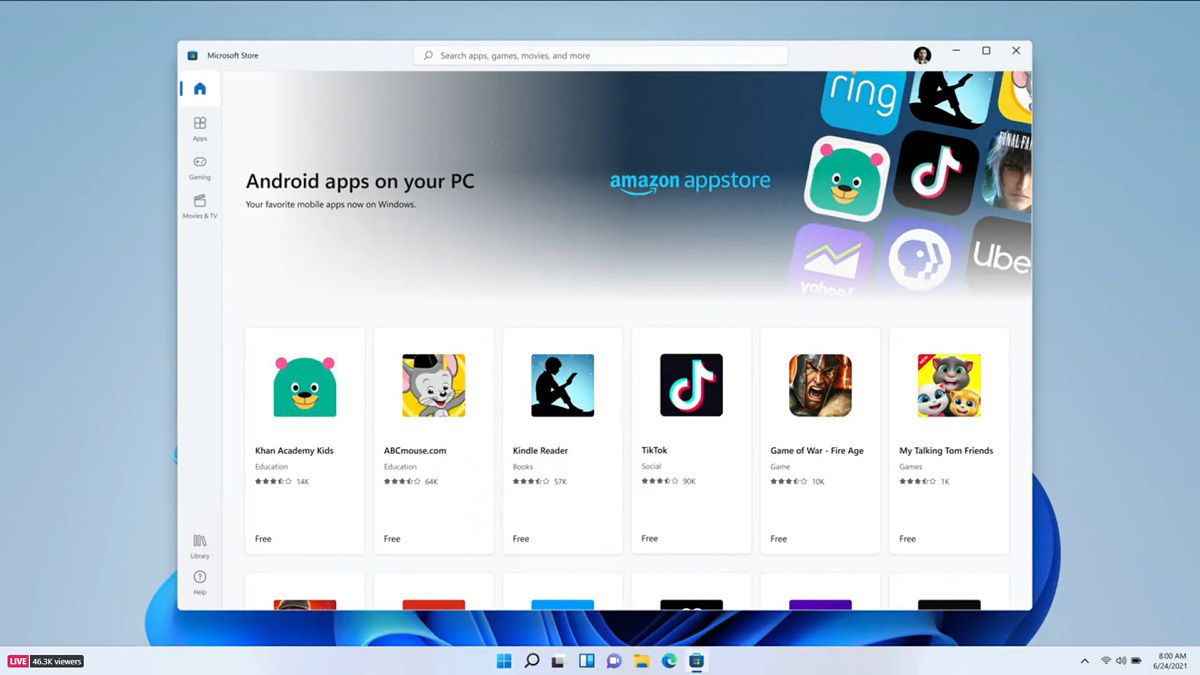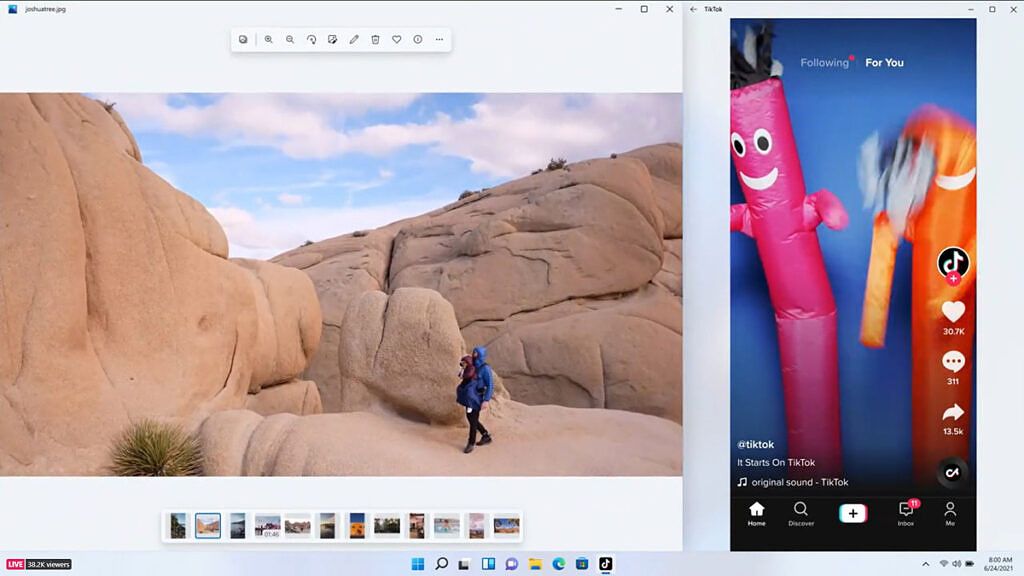Today, Microsoft has officially unveiled the new version of Windows: Windows 11. At the event, Microsoft detailed a number of visual and productivity changes coming to the desktop operating system. Towards the end of the event, Microsoft had a surprise announcement in store: the company is bringing Android apps to Windows 11, accessible through the Microsoft Store via a partnership with the Amazon Appstore.
Few technical details were shared during the initial keynote regarding the Android app integration feature, but in a follow-up developer keynote, Microsoft says they developed a "Windows Subsystem for Android" (WSA) that's similar to the "Windows Subsystem for Linux" already present in Windows. Apps show up in a top-level window where it can be pinned to the start menu, resized, snapped, and generally managed like any native Windows app. Microsoft says that, behind the scenes, Windows 11 creates a proxy native app that handle the bridge between the Android app model and the Windows app model. To make the code run, Microsoft took the advancements they made when developing WSL — and bringing the Linux kernel to Windows — to build the WSA. Android apps run in a virtual machine which provides compatibility with the AOSP framework, and devices like keyboards, mice, touch, pen, and Bluetooth headsets for audio are compatible.
Since most Android apps are built for ARM processors, Microsoft worked with Intel to use the latter's Intel Bridge technology to run ARM binaries on Intel and AMD PCs. In a separate blog post, Intel describes Intel Bridge as a "a runtime post-compiler that enables applications to run natively on x86-based devices." It hasn't been explicitly confirmed yet which Intel-powered processors will support Android apps, though Intel's blog post mentions that the company "expects to deliver the broadest range of computing experiences for Windows 11 this year and beyond, with 10th Gen, 11th Gen and future generations of Intel Core processor-based platforms for consumers, businesses, education, enthusiasts and more." As for ARM-based Windows PCs, they'll also be supported, though Microsoft isn't ready to share any details yet, according to The Verge.
Beyond hardware compatibility, our other concern with this news is that the number of apps available through Amazon's Appstore pales in comparison to the number available through Google's Play Store. Furthermore, it's unlikely that Windows 11 will ship with Google Mobile Services on board, so we don't know if certain apps will misbehave on the OS owing to the lack of Google Play Services. Seeing as Amazon's Fire devices ship without GMS and hence many apps submitted to the Amazon Appstore are made with that in mind, this shouldn't be too much of a problem.
According to the WSJ's Joanna Stern, you'll have to first download and sign into the Amazon Appstore app before you can download Android apps from the Microsoft Store. It's a bit clunky, but hopefully Microsoft improves the process later.
The arrival of Android apps on Windows 11 is clearly aimed at taking on Apple's recent integration of iOS and iPadOS apps in macOS. Apple's integration was made possible thanks to the new Macs switching to an ARM-based processor — Apple's M1 silicon — while the former is happening thanks to a partnership with Intel. Google's Chrome OS also supports running Android apps, and there are also ways to run Android apps on GNU/Linux distributions.
We're excited by this announcement and will be digging into the Android apps integration whenever Microsoft releases the first builds of Windows 11 next week. We're especially interested in learning the process of sideloading Android apps onto Windows 11 without the Amazon Appstore, which is apparently possible to do.


